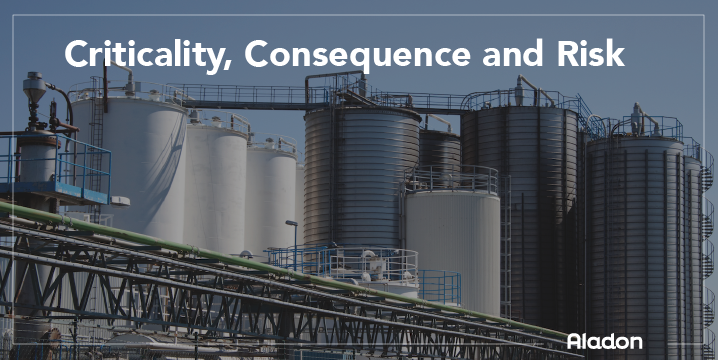When it comes to managing an organization’s physical assets, it is crucial to understand the difference between criticality, consequence and risk. Organizations that focus on risk attempt to reduce intolerable risks to tolerable levels, while ignoring critical assets posing a low-risk. While companies may acknowledge the criticality of their assets, they may do little or nothing to maintain those assets unless their failure poses a risk to attaining business objectives. This attitude toward critical assets can have dire consequences, as most industrial accidents are a result of companies ignoring the risk in very critical operations.
Key to determining which assets require maintenance precedence is understanding the difference between the terminology, meaning and application of criticality, consequence and risk.
Criticality
The quality, state, or degree of being of the highest importance.
In Reliability Centered Maintenance (RCM) terms, criticality of an asset is based on the overall consequence of its failure. The higher the consequence ranking, the higher the criticality.
Consequence
The effect, result, or outcome of something occurring earlier.
Consequences can be described as the way in which failures matters. In RCM3TM, the consequence severity and associated risks of safety, environment and operational capability are proactively considered to define the way in which failures matter.
Risk
The “effects of uncertainty on objectives” and an effect is a positive or negative deviation from what is expected. The negative deviation can be summarized as the possibility that something bad or unpleasant (such as an injury or a loss) will happen.
Uncertainty is a potential, unpredictable, unmeasurable and uncontrollable outcome.
Risk is the combination of the consequence severity and the probability of occurrence of an unpleasant event. In order to determine risk, organizations must quantify both the consequence severity and the probability. While this will always remain an estimate, ranking the risk of an organization’s assets depends on reliable data. The data can be obtained from many different sources e.g. actuarial analysis, technical history, original equipment manufacturers, work management systems, root cause analysis, operators and maintainers and data bases. Unfortunately, most organizations fail in keeping accurate data and therefore, the concept of risk will remain poorly understood and academic for most O&M personnel.
How to use criticality, consequence and risk in RCM
Criticality is based on the overall consequence of failure – higher consequences mean higher criticality. Criticality is generally used to determine whether or not an asset or system should be considered for reliability analysis and maintenance (failure prevention). It is used as a focusing tool (where to start applying RCM and what assets to include) and could also be used to prioritize work orders. It is possible to allow less critical equipment to be run to failure, since the consequences are not as important. For strategy development, critical assets or systems should have top priority and less critical assets could be pushed out. Developing a criticality matrix (which should not be confused with a risk matrix) together with some threshold criteria for deciding how assets will be addressed (what strategy development methodology will be used) is essential. A critical asset or piece of equipment does not necessary mean it is also a high-risk asset, but critical assets should be included in the overall strategy development plan.
Criticality does not determine how often maintenance should be done.
Consider the following example:
A feed transformer is critical for sustained operations. When the transformer fails, the whole plant will shut down causing downtime, lost sales and possibly huge revenue loss. High voltage transformers are generally very reliable, the likelihood or probability of failure is low, and they can last in excess of 100 years depending on the Operating Context (MTBF recorded 179,000 – 12,000,000 hours).
Regardless of the operational consequence (criticality), according to the definition of risk, transformers will be placed in the category of low risk assets, which may be counter intuitive for most asset managers and owners.
Since the transformer is a critical asset, it should be considered for failure management (RCM based analysis), but because it is low risk, higher risk assets could be moved up for earlier consideration (hence using criticality only as a focusing/prioritization tool). The transformer cannot be ignored and managing the risk posed by failure of the transformer, depends on how well the organization manages the consequence and probability of failure. In order to manage the risk, organizations have three options, change the consequence severity, change the probability of the consequence happening or both (depending on the risk). The criticality (overall consequence) will not change unless the circumstances change (adding a redundant transformer). It is however possible to change the probability of the consequence happening by performing the appropriate proactive maintenance.
Risk should always be managed to a tolerable level (with extreme exceptions), especially where the risks are physical in nature (safety and environment). However, too often criticality is used to quantify and establish failure management strategies (maintenance tasks) as opposed to being used as a focusing tool. While assets that fall into the category of intolerable risk require the consideration of the reliability team, it’s essential to consider criticality for low-risk assets when developing a strategic plan.
Aladon provides a suite of risk and reliability-based methodologies supported by world-class software, that has helped organizations globally for more than 30 years to identify the risks and best strategies for building resilience.
